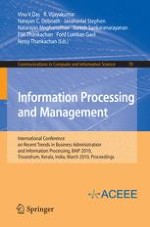It is my pleasure to write the preface for Information Processing and Management. This book aims to bring together innovative results and new research trends in inf- mation processing, computer science and management engineering. If an information processing system is able to perform useful actions for an obj- tive in a given domain, it is because the system knows something about that domain. The more knowledge it has, the more useful it can be to its users. Without that kno- edge, the system itself is useless. In the information systems field, there is conceptual modeling for the activity that elicits and describes the general knowledge a particular information system needs to know. The main objective of conceptual modeling is to obtain that description, which is called a conceptual schema. Conceptual schemas are written in languages called conceptual modeling languages. Conceptual modeling is an important part of requi- ments engineering, the first and most important phase in the development of an inf- mation system.
